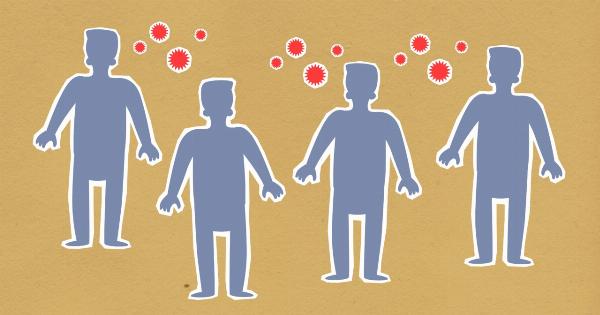Human Immunodeficiency Virus (HIV) and Herpes Simplex Virus (HSV) are two of the most challenging infections to eradicate. Despite significant advancements made in the medical field, finding a cure for these viruses has remained elusive.
However, there have been several recent breakthroughs that offer hope for better treatment options and even potential cures. This article explores some of the most promising developments in HIV and herpes treatment that could transform the lives of millions.
1. Gene Editing Techniques
One of the most exciting areas of research in HIV and herpes treatment is the use of gene editing techniques such as CRISPR-Cas9.
This revolutionary technology allows scientists to precisely modify the DNA of cells, potentially removing the viral genome from infected individuals. While still in the early stages of development, studies have shown promising results in animal models, indicating the possibility of a future cure for these viruses in humans.
2. Broadly Neutralizing Antibodies
Broadly neutralizing antibodies (bNAbs) have the ability to bind to multiple strains of HIV or HSV, rendering them inactive. These antibodies have shown considerable potential in preventing viral transmission and suppressing viral replication.
Clinical trials have demonstrated the efficacy of bNAbs in reducing HIV viral load and prolonging the time between herpes outbreaks. Further research and optimization of these antibodies could lead to new treatment options for both HIV and herpes infections.
3. Long-acting Antiretroviral Therapy
Antiretroviral therapy (ART) has significantly improved the quality of life for people living with HIV by suppressing viral replication. However, strict adherence to daily medication regimens can be challenging for some individuals.
Long-acting ART, which involves the use of injectable formulations that provide sustained drug levels over an extended period, could revolutionize HIV treatment. Clinical trials have demonstrated the effectiveness of long-acting ART in maintaining viral suppression, and this approach may soon become a game-changer in HIV management.
4. Therapeutic Vaccines
Vaccines have long been considered the holy grail for preventing viral infections. While traditional prophylactic vaccines for HIV and herpes have faced significant challenges, therapeutic vaccines aim to control existing infections.
These vaccines are designed to boost the immune response, helping the body recognize and eliminate the virus. Several therapeutic vaccine candidates have shown promise in preclinical and early clinical trials, providing hope for a future where these infections can be controlled without lifelong medication.
5. Enhancing Immune Responses
Another exciting area of research is focused on enhancing the immune response against HIV and herpes.
Strategies such as immune checkpoint inhibitors and immune modulators aim to strengthen the body’s natural defense mechanisms, allowing it to better control viral replication. These approaches have shown encouraging results in early clinical trials and could potentially complement existing antiviral therapies.
6. Targeting Latent Viral Reservoirs
Persistent reservoirs of latent HIV and herpes viruses in infected individuals pose a major challenge to eradicating these infections. Recent studies have explored various strategies to target and eliminate these hidden viral reservoirs.
Novel drugs and treatment approaches that can activate latent viruses and expose them to the immune system or antiviral medications are currently being investigated. Successful targeting of latent reservoirs could potentially lead to a functional cure for HIV and improved management of herpes.
7. Combination Therapies
Combination therapy, which involves using multiple drugs with different mechanisms of action, has been highly effective in managing HIV and herpes infections.
The development of new drugs and targeted therapies offers the potential for more effective combination treatment regimens. By targeting different stages of the viral life cycle or different viral proteins, combination therapies can enhance efficacy and reduce the risk of drug resistance.
8. Microbicides and Pre-Exposure Prophylaxis
Preventing the transmission of HIV and herpes is of utmost importance in controlling these infections.
Microbicides, which are substances applied topically to prevent viral transmission, and pre-exposure prophylaxis (PrEP), where individuals take antiviral medications before potential exposure, have emerged as powerful prevention strategies. Ongoing research aims to improve the efficacy and accessibility of microbicides and PrEP, potentially reducing new infections and lowering the burden of these diseases.
9. Novel Drug Delivery Systems
Improving the delivery of antiviral drugs is a crucial aspect of treatment. Novel drug delivery systems can enhance drug bioavailability, reduce side effects, and improve patient adherence.
Nanoparticles, implantable devices, and long-acting injectables are some of the innovative approaches being explored to optimize drug delivery for HIV and herpes treatment. These advances offer the potential for sustained drug release and more convenient administration, improving treatment outcomes.
10. Collaborative Research Efforts
Collaboration among researchers, policymakers, and healthcare providers worldwide is essential for advancing HIV and herpes treatment. Sharing knowledge and resources can accelerate progress in developing new therapies and improving existing ones.
International research networks and interdisciplinary collaborations have led to breakthroughs in understanding these viruses and developing innovative interventions. Continued commitment to collaboration will be vital in realizing a future with improved treatment options for those affected by HIV and herpes infections.




























